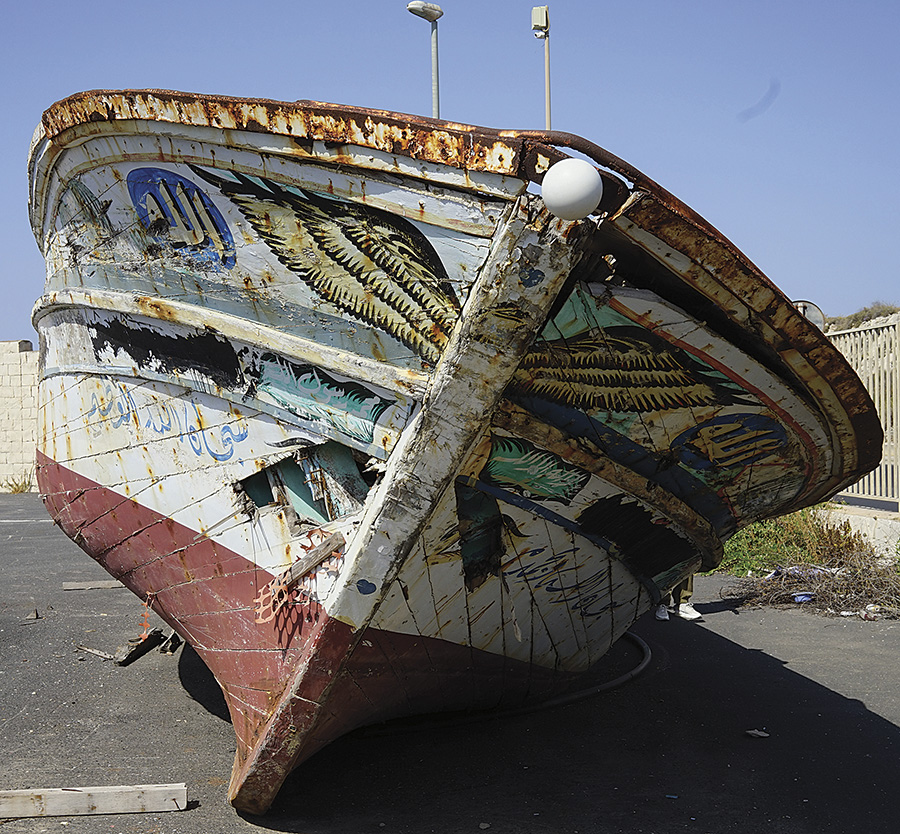January 2022 (126.1)
Article
Ephemeral Heritage: Boats, Migration, and the Central Mediterranean Passage
By Elizabeth S. Greene, Justin Leidwanger, and Leopoldo Repola
The central Mediterranean today marks one of the most active and dangerous routes for sea crossings to Europe, due in no small part to border regimes designed to prevent the mobilities that have defined these waters from earliest antiquity. This article considers initial results of fieldwork undertaken to document and make visible the material culture of contemporary vessels used to carry forced and undocumented migrants to southeast Sicily over the past decade. These former fishing craft reveal structural and spatial adaptations to facilitate a different traffic, reflected also in items left behind when the boats were intercepted. Archaeology helps to embed these journeys within long-term frameworks of connectivity and to situate their ephemeral traces alongside more traditional notions of Mediterranean maritime heritage. In a region that celebrates its deep connections to the sea, care for the materiality of these contemporary mobilities foregrounds human experiences, while serving goals of advocacy, empowerment, and social justice amid global change.
